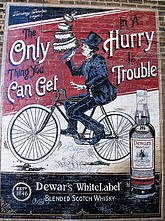I’m speaking about open source at John Marshall Law School’s 53rd Annual Intellectual Property Law Conference on February 27. More info here (warning – PDF!).
To prepare, I’m going over some important cases dealing with copyright licensing in general, that is, cases that deal with copyright licensing but not open source. In case you’re interested, here’s a writeup I just did of the classic case of Graham v. James, 144 F.3d 229 (2d Cir. 1998):
Graham contracted with James for James to develop a custom file retrieval program for use in connection with a CD-ROM compilation that Graham published. The two had an oral agreement whereby Graham would pay $1,000 to James for each new version of the CD-ROM, plus $1 for each disc sold.
After Graham and James had a falling out, Graham continued to use the program James wrote in subsequent versions of the CD-ROM. Graham had removed a copyright notice from the program’s source code, and did not pay the promised royalties. The two ended up in litigation against each other with James accusing Graham of infringing the copyright in the program.
After a bench trial, the lower court found in favor of James on the copyright infringement claim. Graham sought review with the Second Circuit. On appeal, the court vacated the judgment and remanded.
There was no dispute that a license agreement had been formed. Graham argued that at best, James could recover for breach of contract for the removal of the copyright notice and the failure to pay royalties, but not copyright infringement. James presented a number of arguments in an attempt to show there was no license that authorized the use.
One argument that James made was that Graham breached the conditions of the license agreement (and thereby used the program outside the scope of the license) by removing the copyright notice and failing to pay royalties. The court rejected this argument, holding that such activities were mere breaches of contractual covenants between the parties and not a failure to satisfy conditions of the license agreement.
Citing to Nimmer, the court easily held that one does not have a cause of action for infringement when one fails to attribute the author. So there was no infringement resulting from that.
Under the circumstances, the nonpayment of royalties was not the failure of a condition for authorized use. Under New York law, there is a presumption that terms of a contract are covenants and not conditions. In this case, James turned over the program for use before any royalties were paid. Contract obligations that are to be performed after partial performance are not treated as conditions, but as promises (i.e., covenants).
Another argument James made (which the court also rejected) was that assuming, arguendo, the nonpayment of royalties and the failure to attribute were breaches of covenants and not failures to satisfy a condition of the license, the breach of the covenant was so material that the contract was terminated by rescission.
But rescission does not happen automatically upon a substantial breach. The nonbreaching party must “manifest his intention to rescind within a reasonable time.” In this case, the record did not show that James rescinded the license to Graham.
Since James failed to show the absence of a licensing agreement or a failure to satisfy a condition of the agreement, the court vacated the copyright infringement judgment.


 CNET News is running a
CNET News is running a  The
The 
